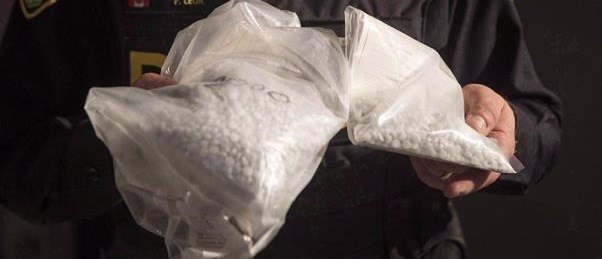An average of four people a day died of illicit-drug overdoses in British Columbia between January and November, sobering numbers that show fentanyl continues to devastate communities across the province.
A total of 1,381 people died in B.C. from the beginning of the year to the end of November, according to figures released Thursday by the B.C. Coroners Service. That’s only one death shy of the same period for 2017, the deadliest year for overdoses in B.C.’s history.
The number of overdose deaths seems to have plateaued, said B.C. Coroners Service spokesman Andy Watson, despite the provincial government’s overdose-prevention measures, such as the establishment of supervised-consumption sites and a drug-death investigation team.
“The good news, from a glass-half-full point of view, is that the number hasn’t gone up, but it does show that there’s more work to be done,” Watson said.
While the number of deaths is “disheartening,” Watson said there would likely have been far more if the province hadn’t implemented prevention efforts after declaring a public-health emergency in 2016.
In November, 120 people died of suspected overdoses, which represents a nine per cent increase from the previous month and a 13 per cent increase from the number of deaths in November 2017. On Vancouver Island, 15 people died of overdoses in November.
Fentanyl was detected in about 85 per cent of illicit-drug overdose deaths in 2018.
Vancouver, Surrey and Victoria have been hit hardest by the overdose crisis. A total of 85 people fatally overdosed in Victoria between Jan. 1 and Nov. 30.
About 91 per cent of people who died of overdoses were between the ages of 19 and 59, and 80 per cent were men.
The vast majority of overdoses happened inside — 58 per cent in homes and 25 per cent in other residences, including social and supportive housing, single-room-occupancy buildings, shelters and hotels. About 12 per cent of overdoses occurred outside, in vehicles, sidewalks, streets and parks.
“One key theme is that we’re seeing people in isolation — those are the ones who are most represented in this death data,” Watson said. Though many believe most overdose victims are dying on the streets and in back alleys, that’s not the case, he said.
“Everyone is using substances for a variety of reasons. There’s no script to this.”
No one has died at a supervised-consumption or overdose-prevention site.
The deadliest month for illicit overdoses this year was March, when 160 people died — almost as many as the 162 who died in December 2016, the highest monthly total since the coroners service began collecting statistics.



